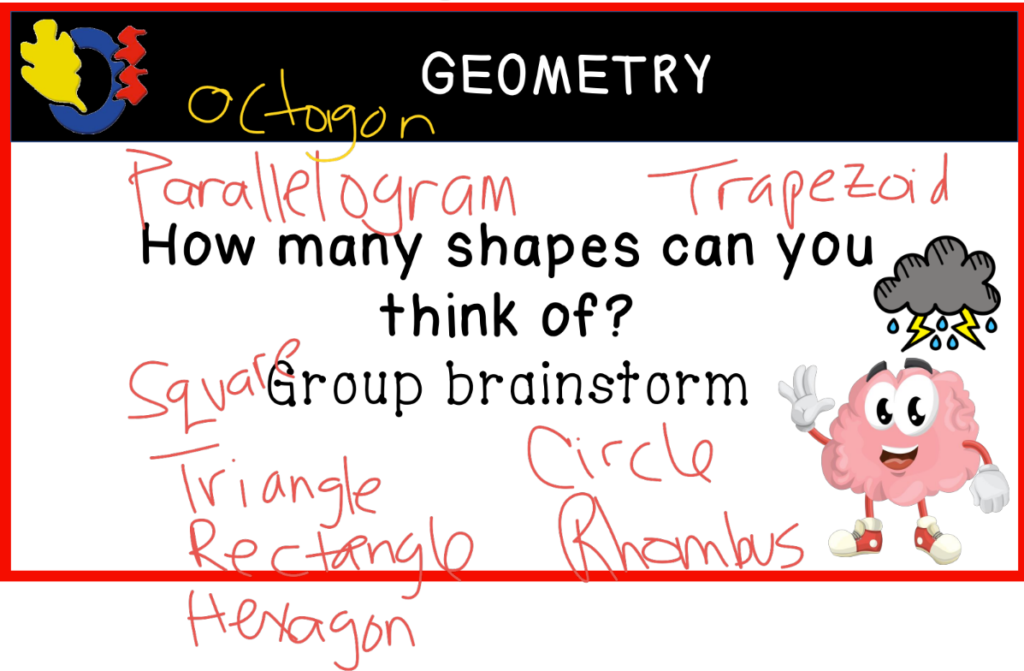
The next two classes focused on geometry and answering the question what’s a tangram? Our warm-up today was a brainstorm that got the class to list all of the shapes that they could think of. They gave me all of the basics pretty easily and we had a brief discussion about the definitions of each shape. This led nicely to our topic for today which was tangrams.
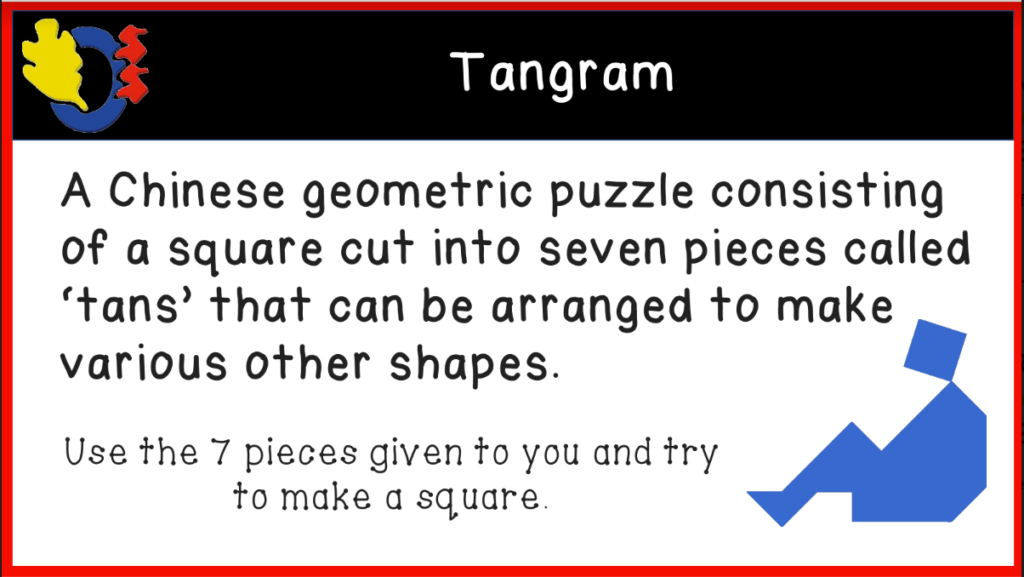
We first discussed “what’s a tangram?” and a bit about the history of tangrams. Next, I put students into random groups using a deck of cards and had them use large magnetic tangram tiles to try and make a square. Surprisingly this took a LONG time! many had holes in their puzzles and struggled through. One advantage to working on the large boards with magnetic tiles was students could look around at other groups to get a hint. There was an air of competition in the room, however, and students were trying to conceal their boards so others couldn’t copy their work. After a good 15-20 minutes, most groups successfully got the square shape.
Next, students were asked to calculate the perimeter and area of their tangram square using a metric ruler. since the boards that they were working on were magnetic, they could write their measurements on the board and work them out there with their peers. Finally, students had fun making tangram designs on their boards. We had a little gallery walk/look about to see the creations. This wrapped up day 5.
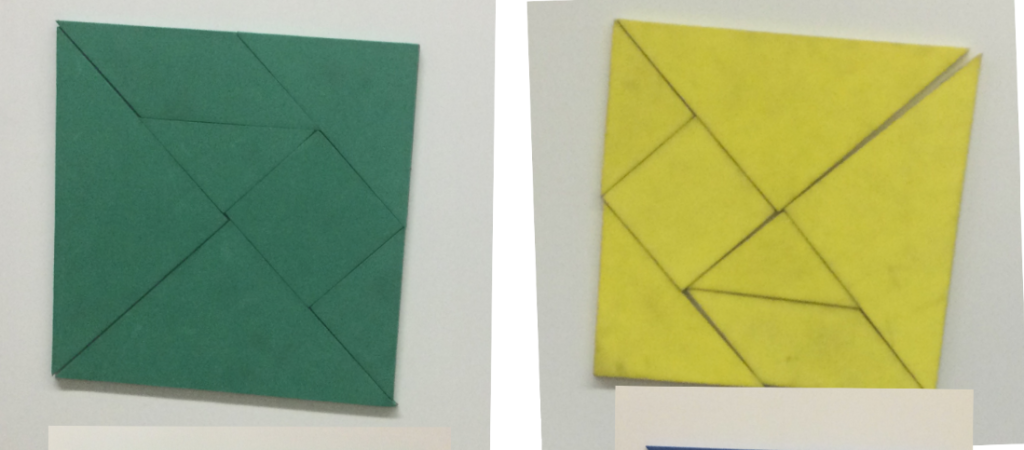

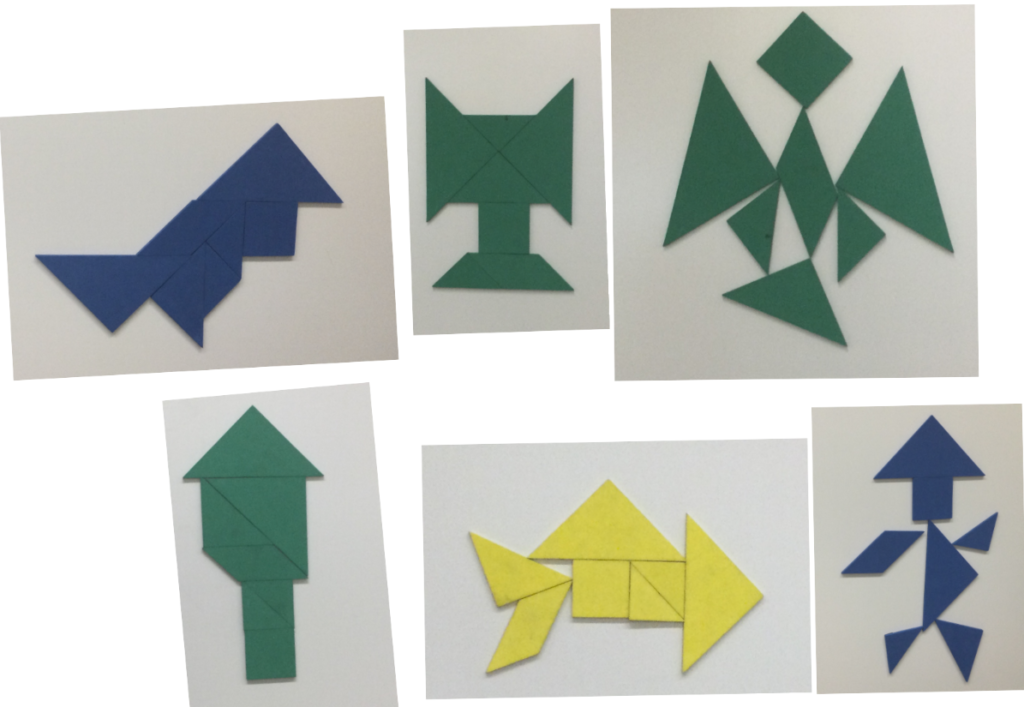
Day 6
Students were given two paper copies of tangrams and were asked to cut out one set at a time. In the first set, they had to recall yesterday’s activity and make a square with their paper tiles and glue them on the front of their page. Next, they worked on calculating the perimeter and area of their paper tangram square. After they finished that part of the exercise, we refocused our attention on the front board and discussed the proportions of the tangram square. we discussed what shapes were there and what fraction and percent of the square each shape represented.
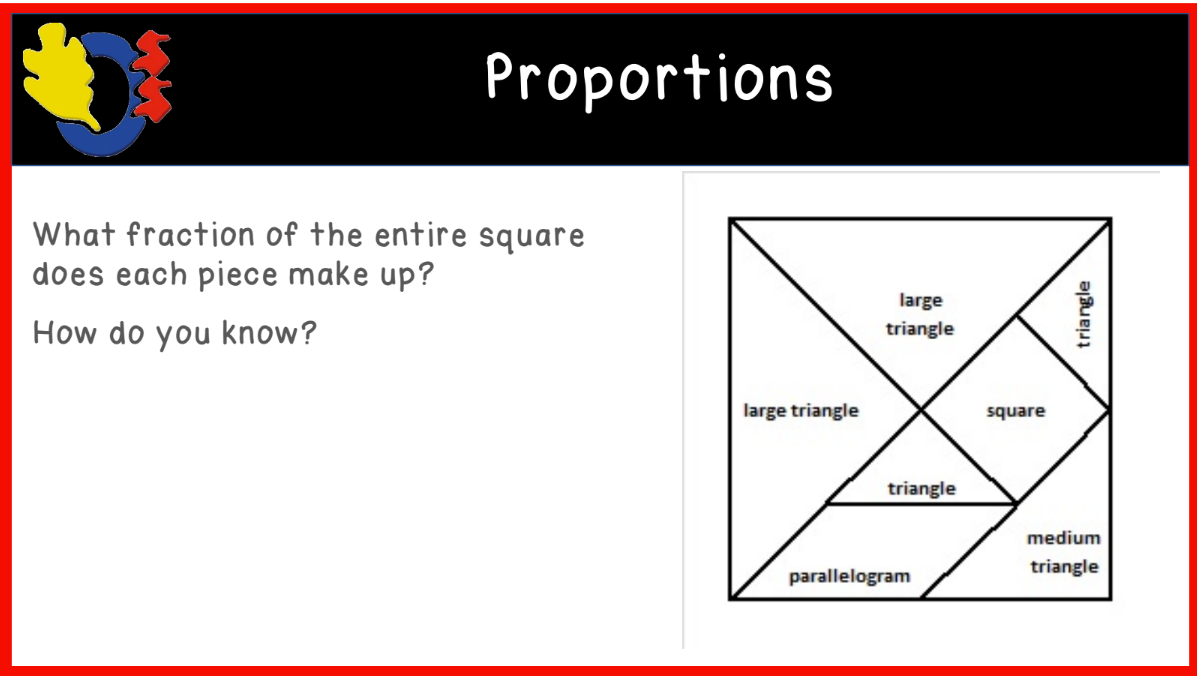
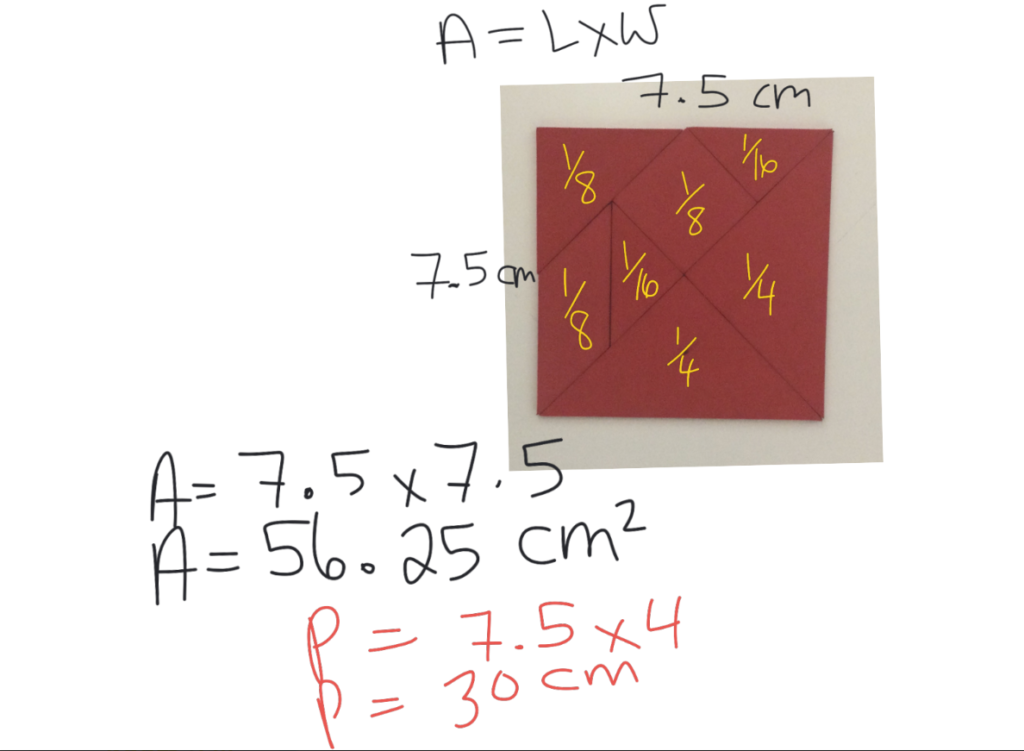

The last activity that we did with our tangrams was play “the tangram game”. I projected several figures on the front board one at a time, and students had to recreate those figures with the second set of tangram tiles. After we finished with the activity, students were asked to make a tangram shape using their imagination or inspiration from the internet and then calculate the perimeter and area of their figure. It was surprising how many were not able to make connections between the tangram square that they had made on the front with the one they created on their own. The two figures should have had different perimeters and the same area. Thankfully, some got it!
I hope that something here was able to help you on your teaching journey.
Have a great day!